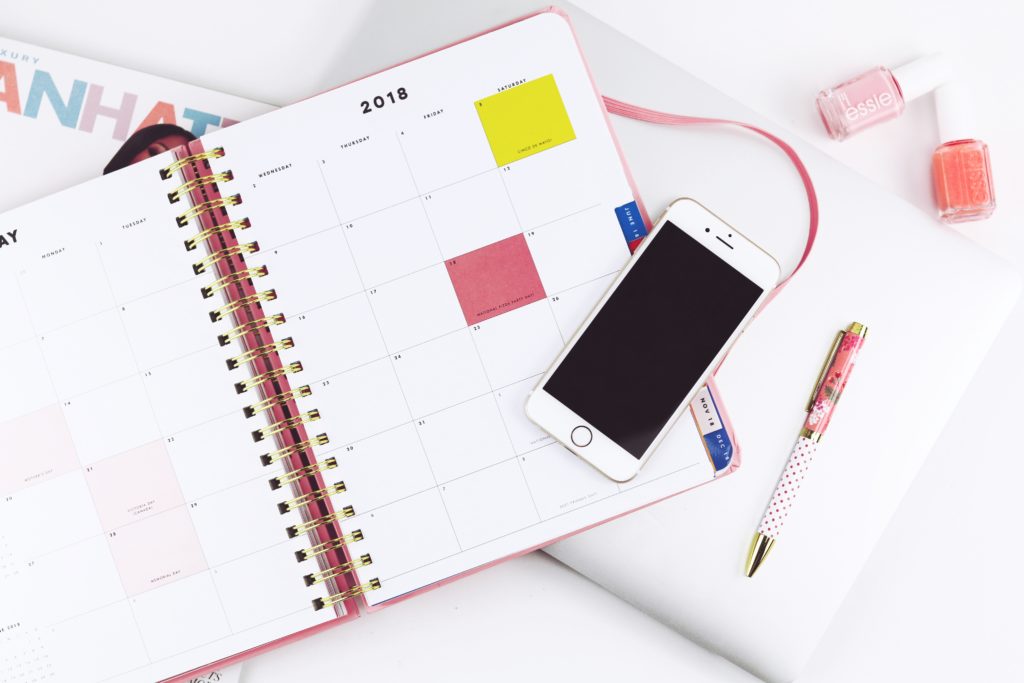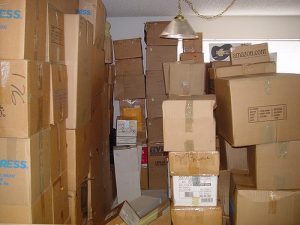In 2015 Forbes reported a Bureau of Labor statistic affirming that, in 1930, the average American woman owned 9 outfits. This, as opposed to a current day figure of about 30 outfits – one for each day of the month.
In 2016 a survey of 1,000 American women was conducted by ClosetMaid. It found that women only really like 10 percent of their wardrobe. It also found that one in ten women are depressed when they open their closet and 40 percent say that they don’t like any of their clothes.
As Americans, we are blessed with an abundance of choices when it comes to clothing and fashion. A broad variety of style, quality and affordability surround us. Yet, we can surmise from these two studies that, in the U.S., we have more clothing than ever before and are less satisfied with what we have. So where does the disconnect lie? How do we get from Point A – the clothing that we own; to Point B – happiness?

There are many explanations centered around the social and psychological motivations behind our large wardrobes and our dissatisfaction. Compulsive shopping, ecological reasoning, “retail therapy”, depression and loss are just a few theories offered.
The anxiety experienced when contemplating and processing the variety and abundance we face upon viewing our overcrowded wardrobes adds a real neurological strain. We end up starting our days stressed-out even before we walk out our front door.
Although it remains important to address the underlying reasons for overwhelmed and overwhelming closets and spaces, professional organizers (unlike therapists) also get the opportunity to directly address the physical issues as well. Addressing spacial congestion is empowering, encouraging a feeling of control over the environment, a feeling that can help ward off anxiety and depression.
Here are three simple tips for actions that you can take today that will make a difference every day.
Start with unused hangers and empty boxes that take up space for absolutely no reason. A dozen empty hangers can take up to a foot of space on your hanging rod – a whole foot! There may be many hiding between crowded garments so be sure to filter through everything. Next, begin at one end and review each garment. Remove all items that can be tossed or donated; toss the trash, then bag and label the rest for “Donation”.
Unless you live in a temperate climate where your entire wardrobe is versatile for year-round use, there are very few reasons to keep all of your clothing at hand in your closet all of the time. Separate items you are keeping into two seasonal categories: Fall/Winter and Spring/Summer. Keep the current half at hand in your closets and dressers. Store the other half in plastic bins or space bags. Take advantage of the seasonal switch to purge items that you no longer want before storing the rest.
Okay, I will admit that this may sound a little “organizer”-geeky, but try it out before you scoff. Imagine you are looking for your favorite pair of black pants. The ones that fit just right and aren’t too long or too short. Do you have to go in between all your tight spaces in your closet to find them before realizing they are at the cleaners? Not if your closet is color coordinated. You will simply go through the section of black pants. Not there? Then they are in the laundry. Need to put together a quick outfit? Easy to do when your eyes are simply matching colors and not hunting between randomly hung, tightly crammed fabrics.
Yes. Virtual organizing has been around and effective for much longer than this recent COVID-19 quarantine. However, our current degrees of isolation are making virtual organizing more attractive than ever before to both organizers and those looking for organizing help.

Surprised? You might be. Yes organizers can, and often do, physically redesign your office or room layouts, remove your clutter and set up your files and spaces. Yet, the more important and valuable benefit of what they do (what you are really paying for) is what you don’t see. It is the things you experience when working with a professional organizer and the resulting benefits of those experiences.
Whether in-person or virtually in-person, a professional organizer is a pot of gold when it comes to processes, goal setting, motivation and innovation. Partnering with clients from deciding where to start, to trouble-shooting client-specific challenges, to supporting continued maintenance – an organizing and productivity specialist is the way to go.
If you have already worked with a professional organizer, start there! Contact them and ask them if they are running virtual sessions or, if not, ask if they would consider trying one with you. I recommend sticking with someone with whom you already have a good rapport.
Otherwise, the National Association of Productivity and Organizing professionals (NAPO) and it’s local chapters (here in the Philly area it is NAPO-GPC) are the places to start. NAPO professionals invest in their businesses, training and professional development to make sure they are bringing the best services to their clients. What’s even more exciting is that, since they will serve you virtually, you could choose an organizer from literally anywhere!
During this time of COVID-19, many of us are experiencing some degree of isolation and limitation in our lives. Some of us are eager to get back to an unrestricted lifestyle and others are cautiously waiting it out until stronger assurances are announced. Either way, the support of a professional organizer will help unravel difficult decisions, set up successful solutions and motivate you to stay on track. It is a service that you may decide works best for you even after the quarantines are lifted!
Ahhhh, can you hear it? Stop. Listen closely. Is that the sound of an empty house? Oh my goodness! Are you actually at home – alone? That’s right folks. The kids are back to school and that morning cup of coffee hasn’t tasted this good in almost longer than you can remember.
Thank you Fall for showing up – right in time to save us from completely losing any semblance of sanity! While you sit for an extra 5 minutes, enjoying the sound of silence and taking another sip-o’-joe, you may begin to look around.
What you are looking at is the aftermath of summer:
Amidst everyone else’s debris, there are some of your own items that need attention, yet it’s hard to know which and where they are. Here are 3 suggestions from a Professional Organizer and mom of three grown children:
Take these three small steps and enter Fall confidently prepared to harvest the rewards of the season.


That can look like many things: maintaining a written planner, using and sharing an online calendar, time blocking, scheduling appointments as well as daily tasks, or creating a timeline for big events. And, while creating a timeline is a great way to keep track of any project or event that you are planning, it is a most valuable asset in managing a move.
Moving is uncomfortable and inconvenient at best, and downright exasperating and stressful at its worst. This is due to the infrequency and unpredictability of the process.
This isn’t an undertaking the average person practices over and over again throughout the year. We don’t move to a new home every week! Therefore, we don’t get the opportunity to hone and streamline each step of the process. And, even if we do sharpen our skills, there are some factors that just cannot be foreseen. Housing deals fall through, moving trucks get delayed, people in our lives have emergencies that need to be handled. Making a timeline cannot change these unexpected delays but it can put us in control of how to manage them and that’s what being organized is all about – being prepared.
Whether you are moving next year or this summer, it is never too late to create a timeline for your move.

A moving timeline may seem like extra work for your move right now, but the small bit of time taken to set up this management tool will support you throughout the process and keep you in the driver’s seat.
“Where did all this stuff come from anyway? How did it all fit in here in the first place? I can’t believe how long this is taking and how many boxes we have! AAAaahhhh!!!!”

Well, it’s true. When we pull everything out of its storage space, we can see the volume of what we really have. And, for those things that haven’t been seen or touched in years: much of it is astonishing.
“Cans of hairspray? Wait. I haven’t bought hairspray in a can in at least 2…uh, 5…oh, I don’t know – better throw that out. How did these shoes get back here? Man, they’re dusty. And sort of misshapen. Well, okay very misshapen. Nevermind. Out! And, wait. Do we really have 6 new containers of black pepper? Six? I had no idea. This will last us forever!”
You are moving into a new home. Whether larger or smaller than your last, it’s an opportunity to get organized – right from the start! Here are 6 spaces to set up when you move in so you can get and stay organized:
Spice Storage: There are so many options for organizing spices that there is really no reason you need to fight to find what you need, have bottles and jars falling out onto you as you reach behind, or repurchase multiples of what you already have. 
Pantry: DIY or go the extra mile and get pro-installation. A pantry organizing system will be a delight to your family today and a great selling point tomorrow.
Under Sinks: Either in the kitchen or bathrooms, under sink storage will make ALL the difference. Enjoy the control and say goodbye to yucky under-sink messes!
Shoes: The struggle is real. First decide where you want to store them (By the entryway? In a closet? Under the bed? In the garage?) Then, reign them in.
Bedroom Closets: If you are renting a home, you may want to save money and purchase some temporary solutions that you can take with you when you move out. For homeowners, installing built-ins is the way to go.
Storage Area: Before you go building columns and walls of heavy boxes stacked one atop another; stop and think. This is what got you into the last mess of storage chaos. Is there room for some shelving? Is there ceiling or wall space to be taken advantage of?
This year’s Philadelphia Home Show has a theme of “Small Spaces”. With the recent trend of Tiny Homes, this theme seems a perfect fit. Besides, many residents of Philadelphia and its surrounding areas, without ever opting into the Tiny Home movement, have been faced with the challenges of tight spaces for decades.
At the show, visitors will get a chance to browse the latest home design concepts and  products. They can also get professional home improvement tips from presenters like Tyler Wisler from HGTV’s Design Star and Kevin O’Connor of This Old House. And, if that’s not reason enough to weather the cold, I will be joining several of my fellow Productivity & Organizing Professionals (NAPO) who will also be sharing their own tips, tricks and secrets for managing your spaces and living a clutter-free life.
products. They can also get professional home improvement tips from presenters like Tyler Wisler from HGTV’s Design Star and Kevin O’Connor of This Old House. And, if that’s not reason enough to weather the cold, I will be joining several of my fellow Productivity & Organizing Professionals (NAPO) who will also be sharing their own tips, tricks and secrets for managing your spaces and living a clutter-free life.
When it comes to busy lives and challenging spaces, organization and creativity are key. The more you are able to implement systems that address the challenges of your cramped space, the more freedom and control you will begin to feel. Imagine yourself having all your supplies neatly arranged and tidily stored so that there is no searching, digging, shuffling or juggling – each time you need them. Think of how quickly and easily you could come and go, with nary a look back, confident that all you are walking away from is in order. Ahhhh, the peace of it.
However, like the physical foundations our homes are built upon, a free and organized life needs a foundation in order to be sustainable. Sometimes this means adding organizational products in order to create a “home” for the items we use. Sometimes it means removing unnecessary excess from the environment. And, it almost always means having a set of basic foundational rules in place so that patterns can be formed and replicated.
So come on out! View the new trends and home solutions, attend a presentation or two and bring your own unique organizing challenge to an “Ask the Organizer” session to get personalized advice from a NAPO-GPC professional organizer!
WHEN: JANUARY 12–15 & 19-21, 2018
WHERE: PENNSYLVANIA CONVENTION CENTER, PHILADELPHIA, PA